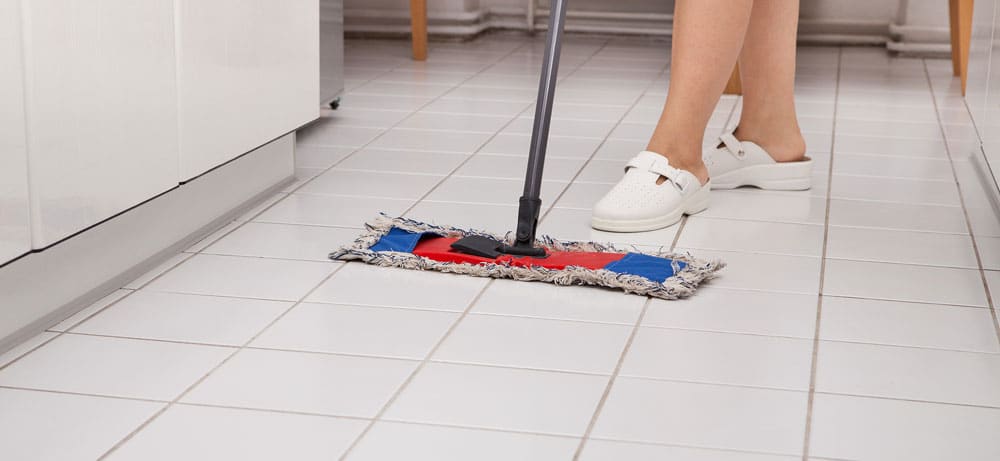It is vital that floors in your workplace and home are kept clean and hygienic at all times for many reasons including OHS safety, presentation to clients, staff and guests and more importantly health reasons.
Wet cleaning is one of the best ways to solve this situation.
Wet Cleaning is a process of cleaning that removes dirt and grime that has bonded itself to the floor surface. In such circumstances, it is not usually possible to remove the soil and dirt by just dousing the floor with plain water and mopping. A more effective method is wet cleaning where the dirty floor surface requires a combination of solvent, chemical and mechanical action to facilitate the removal of the dirt.
In order to effectively employ wet cleaning of floor surfaces, we at KAT Cleaning professional cleaning services always seek to remain mindful of at least four factors to ensure the job is done correctly. These four factors we adhere to are: TIME, AGITATION, TEMPERATURE AND CONCENTRATION.
Each job is different and a blend of all these in various capacities is required for different situations. We at KAT Cleaning are trained professionals and have the experience and technical know how to make the correct adjustments to ensure a successful result every time.
Time
Chemicals need time to penetrate and lift dirt properly – there are no cleaning chemicals that work immediately on impact. You should allow the chemical to do its work for a good few minutes – work on something else or go for a coffee and come back once the chemical has done its job. Each variable must be considered when wet cleaning floors such as a cleaner removing a stain from the kitchen sink, to a tile and grout specialist scrubbing tiles, if you can optimise these factors in the course of your cleaning, you will achieve the best results.
Agitation
Agitation is very important to physically remove the dirt and stains from the floor.
You will often find that, just as important as the time needed for chemical to react to dirt is the means by which you intend to clean that surface. In this regard, Agitation refers to the method of breaking up the matter that clings to or has somehow bonded with the surface. The type of pad that you use is an important factor to consider here also – mop, brush or sponge.
Temperature
A best result when it comes to lifting dirt and stains from floors is from heat.
As a general rule of thumb, the higher the temperature, the more powerful and better the clean will be. As a general rule it has been said that for every 10 degrees that is increased over 65 degrees Celsius, the cleaning power that you have available and at your disposal is doubled.
Please correctly consider the surface however to ensure it can take high temperatures – concrete, ceramic tiles and most lino can take a good amount of heat – please take care with high temperature to not damage flooring when cleaning porcelain, marble, granite and wooden floors such as floor boards and parquetry.
Concentration
Concentration of chemicals and solvents that are used to clean floor surfaces is also an important consideration.
Simply pouring a greater amount of the chemical to the mix will not facilitate better cleaning. In fact, this can have a counterproductive effect. Too much chemical concentration can lead to the re-soiling of the surface and residue is left behind.
Similarly, not enough concentration of chemical will not give an optimal result either. Try to follow as closely as possible the manufacturer’s instructions which cannot always be as simple as you may think.
We at KAT Cleaning have been cleaning business premises and residential homes floors for many years and have vast experience when it comes to time, agitation, temperature and concentration. We know how to achieve the perfect result – we will ensure the job is done right first time every time.
Contact us at katcleaning.com.au for a free consultation and quote.
